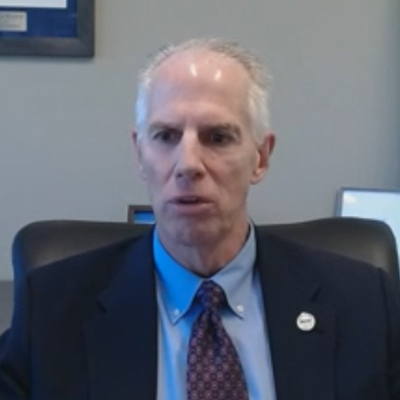A 90-minute hearing Tuesday on renewable energy by the Senate Agriculture, Nutrition and Forestry Subcommittee on Rural Development and Energy focused mainly on ethanol blending, but senators also heard about the need for more electric transmission infrastructure in the Midwest.
Subcommittee leaders argued that future federal budgets ought to include dollars for new liquid fuels technologies and a possible mandate that future gasoline blends are 15% ethanol rather than the current 10%. But they also mentioned new incentives to pay for a massive buildout of wind and solar resources deep in America’s Farm Belt.

In a response to a question from Sen. Amy Klobuchar (D-Minn.) about the value of expanding renewable generation to rural communities as well as small farms, Katie Sieben, chair of the Minnesota Public Utilities Commission, said wind farms in their state have created rural wealth that farming alone had not.
“Renewable energy, especially wind projects, have created tremendous economic development opportunities for small communities. We are seeing the impacts of increased hiring of local workers, which leads to more careers in the renewable energy sector. We’re also seeing increased manufacturing domestically of wind turbines and solar panel components. Combined with the tax benefits that come from renewable energy projects, it really is a holistic, helpful way to improve rural economies across Minnesota,” she said.
“Though what we really need in Minnesota, especially, is more transmission,” she added. “As of January, there are 533 projects, renewable energy projects primarily, waiting to connect in the MISO queue [that] total over 15 GW.
“New transmission can maximize the value of low-cost renewable energy and create living-wage jobs that are essential to ensuring Americans have reliable power. Please include transmission investments in the American Jobs Plan or other relevant legislation.”

Bill Cherrier, executive vice president and CEO of Central Iowa Power Cooperative, a nonprofit generation and transmission cooperative based in Des Moines, explained that federal tax credits are currently not available for electric cooperatives.
“It’s important for policymakers to note that the current federal tax credit structure prevents electric cooperatives from taking advantage of tax benefits to directly build and own wind and solar assets. The current program requires cooperatives to work with third-party providers on long-term contracts to bring this energy into the market. The current incentive structure impedes our ability to adopt renewables and new technologies in a more cost-effective way,” he told the lawmakers.
Still, biofuel remains a popular point of bipartisan agreement among rural lawmakers.

Included on the panel was Emily Skor, CEO of D.C.-based biofuels advocate Growth Energy, who used her testimony to unveil an economic analysis issued earlier this month demonstrating that boosting the E10 blending mandate to 15 would be a shot in the arm for the U.S. economy. Gasoline blenders have long resisted the switch to E15.
The study by Pennsylvania-based ABF Economics, Skor said, determined that a move to a national E15 standard would add $17.8 billion to U.S. GDP, support an additional 182,700 jobs, generate $10.5 billion in new household income and save consumers $12.2 billion annually in fuel costs.
“In fact, studies show there is no path to net-zero emissions by 2050 without biofuels,” she said. The Energy Information Administration “projects that gasoline- or flex fuel-powered vehicles will make up about 80% of new vehicle sales in 2050, meaning the vast majority of the cars on the road will continue to be powered by liquid fuels for decades to come.”

